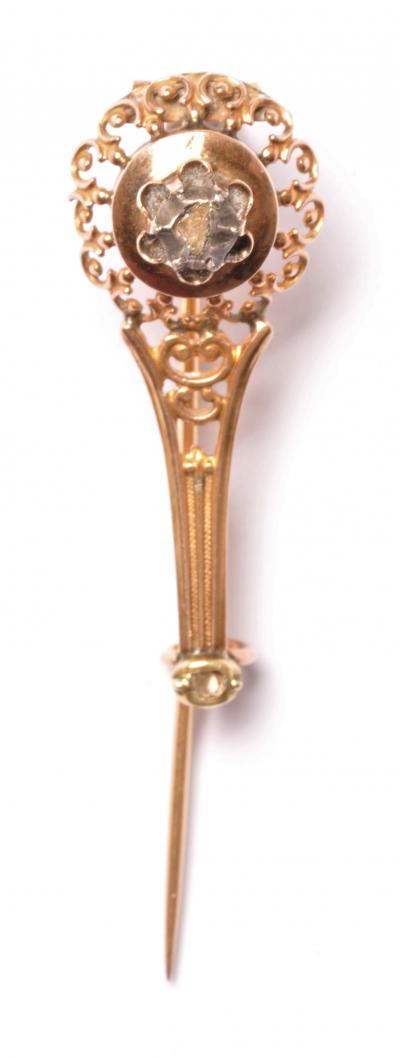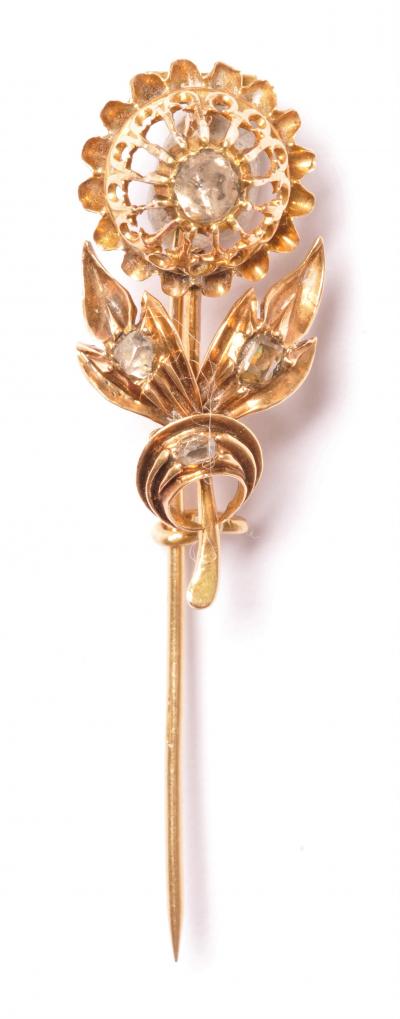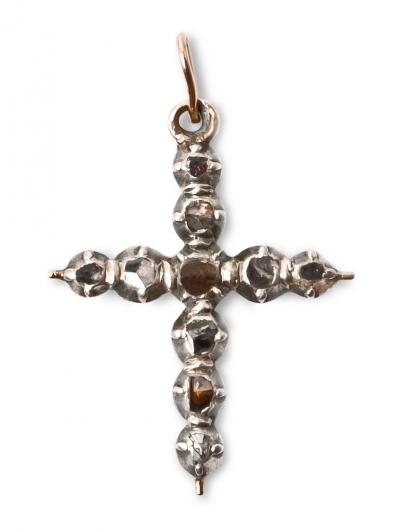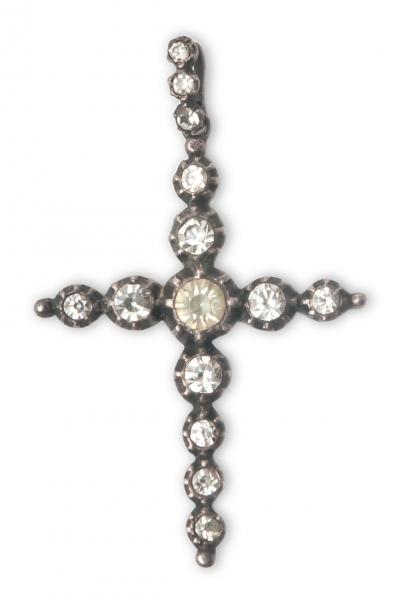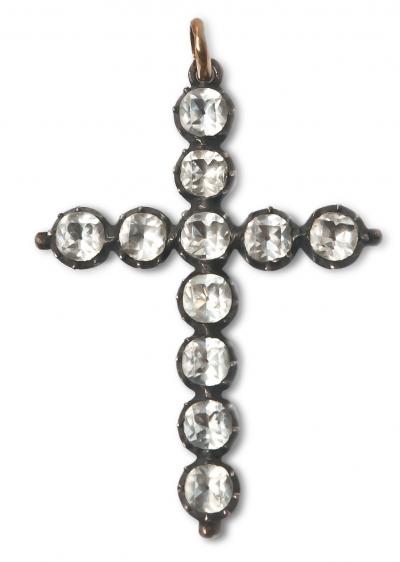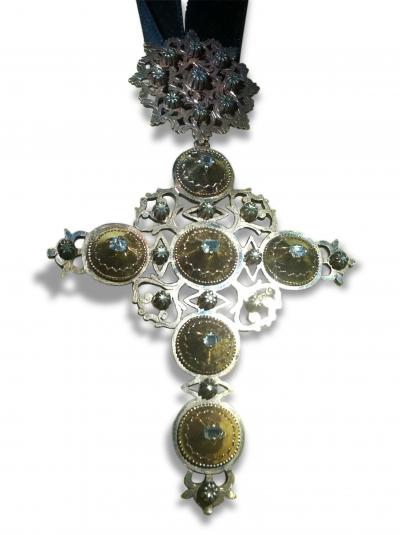Antoine Raspal - l'Arlésienne
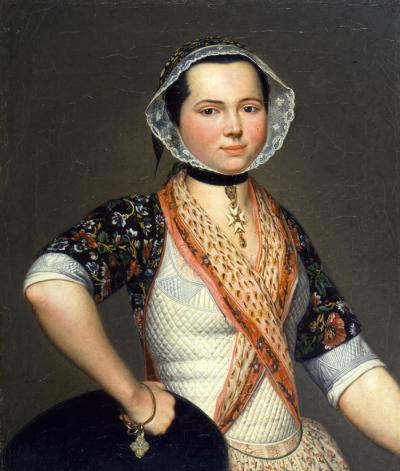
Antoine Raspal, 1738 - 1811. His Arlesienne is wearing the traditional "Coulas" bracelet as well as
a traditional Maltese cross, musée Granet, communauté du Pays d'Aix
The Coulas bracelet
Antoine Raspal
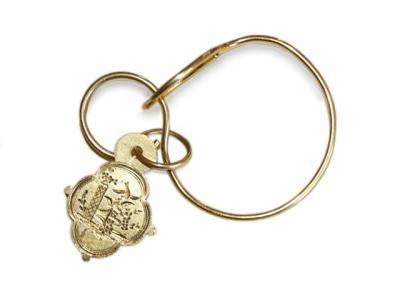
antique "coulas" bracelet in gold - collection Museon Arlaten, Arles



antique "coulas" bracelet in silver - front, back and close-up
The Victoria et Albert museum of London has a huguenote cross in their collection which they purchased in Avignon in 1872. It was described, at the time of their purchase, as having been worn on the wrist, presumably on a coulas bracelet.
The Arlesian cross
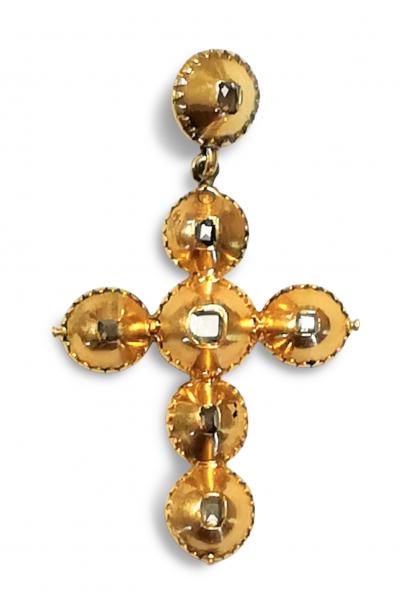
cArles cross with its slide in gold and table-cut diamonds
The Maltese cross
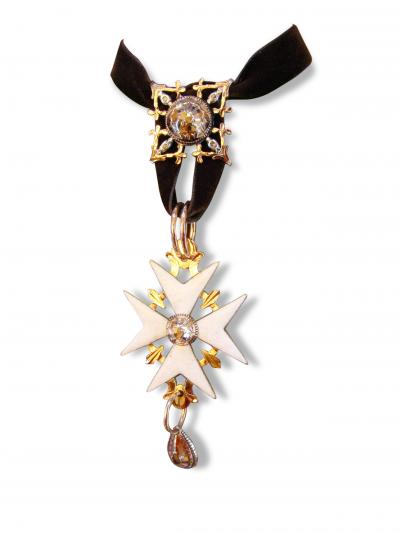
Maltese cross from Arles in gold, enamel and diamonds
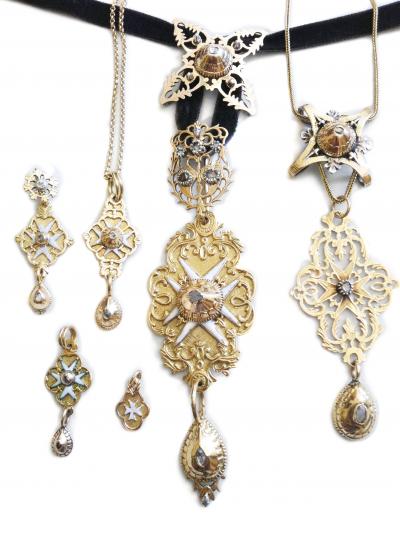
Maltese cross from Arles in gold, enamel and diamonds
The devote or Jeannette cross
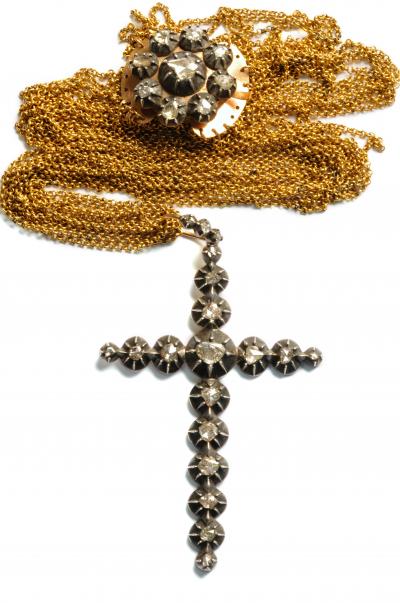
large devote or Jeannette cross from Arles in gold, silver and diamonds with its long chain and diamond catch - actual size
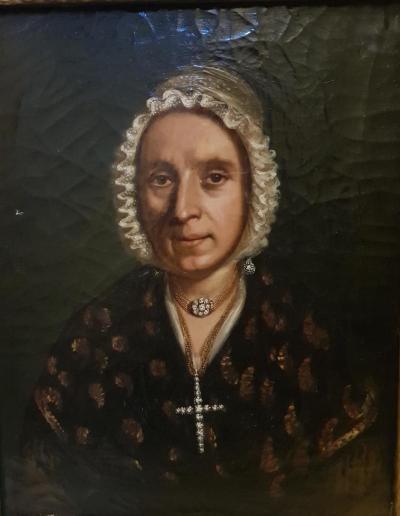
portrait of a provençale woman showing how the large devote or Arles cross was worn with the swag of chains wrapped around the neck and with the diamond catch worn at the throat.
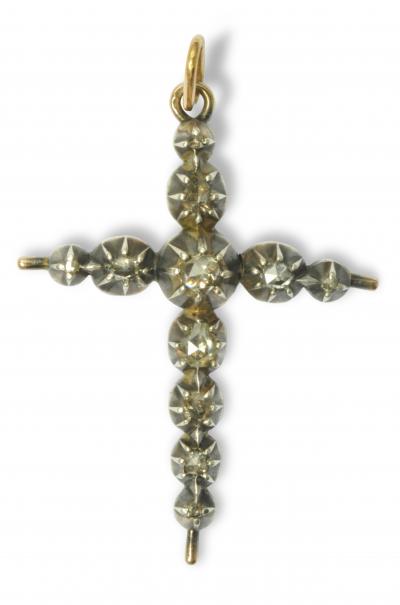
devote or Jeannette cross from Arles in silver and diamonds
Antoine Raspal
devote or Jeannette cross from Arles in silver and Rhinestone (or diamonds, the one on the left)
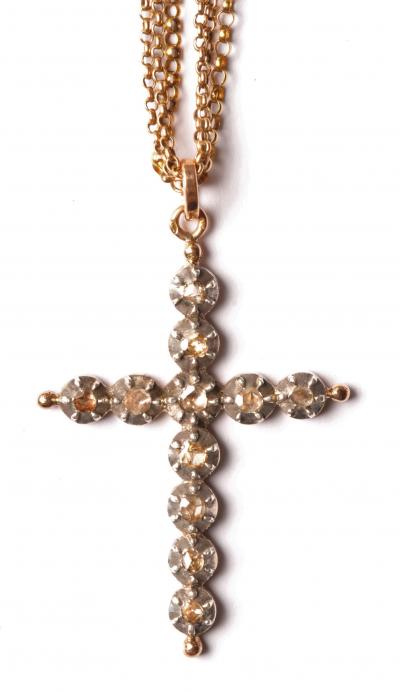
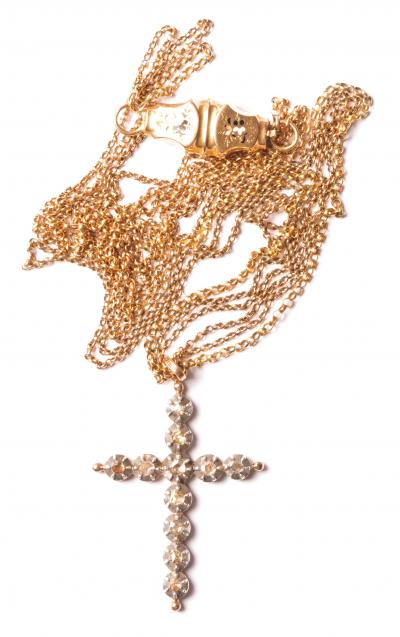

devote or Jeannette cross from Arles in gold, silver and diamonds with its triple chain necklace
Antoine Raspal
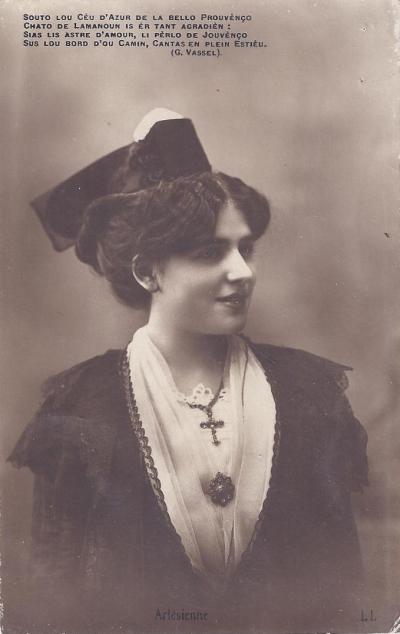
jewellery and costume, Arles
|

jewellery and costume, Arles
|
The Capucine cross
Antoine Raspal
|
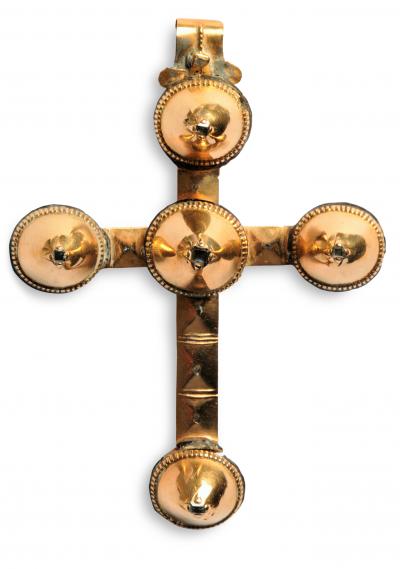
Capucine cross in gold and diamonds
|
|
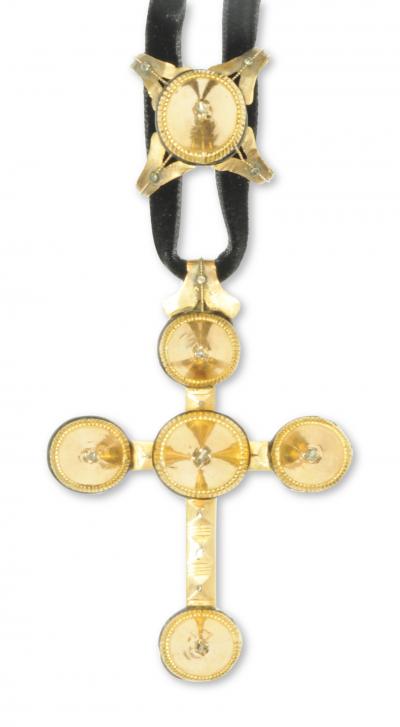
Three Capucine crosses with its slide in gold and diamonds |
|
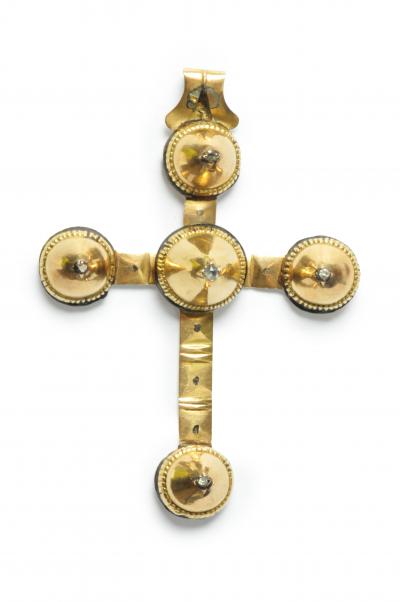
Capucine cross in gold and diamonds |
The Capucine cross is usually quite large, at least 70mm in height, and set with very small rose-cut diamonds on the cones and the arms. The bases of the five cones have a circle of black enamel. It's worth noting that there are no effigies of Christ on the various crosses from the south of France with the exception of the flowered cross from Nice and the clover cross of Provence - Dauphiné.
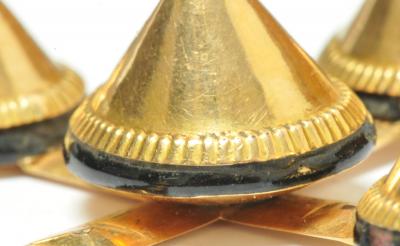
detail of the Capucine cross
The Maintenon cross
Antoine Raspal

painter - Antoine Raspal (1738-1811), Portrait d'Arlésienne, oil on canvas, around 1760
she's wearing a Maintenon cross with her traditional dress - musée Reattu, Arles
The provençale papillon (butterfly) cross
The papillon cross from the south of France is quite different to the Flemish papillon cross often worn in the north of France and Normandy. However, there seems to be a lot of confusion among collectors and one often comes across the Flemish crosses being sold in the south of France as being provençale crosses. If you look at the provencale crosses closely however, the differences are unmistakable. They generally have a small butterfly-shaped bow at the top and between the arms you can distinguish a line which separates into two as it approaches the edge of the cross. Flemish papillon crosses, called croix à la Jeannette in Belgium, are inexpensive there and it is possible that some antique dealers import them for resale in the south of France. It could be argued that 150 years ago they were popular in the south of France however I have never come across any in the old collections I’ve bought in the south so I suspect the phenomenon is recent.

papillon cross in silver and diamonds
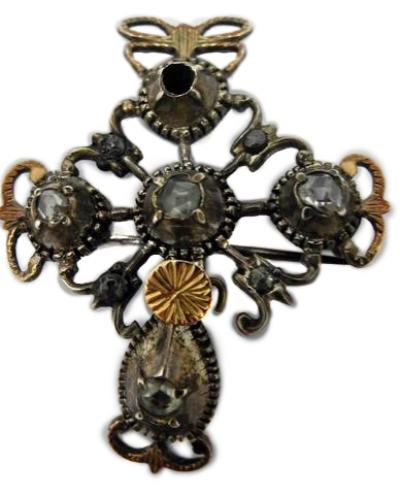
papillon cross in silver and diamonds |
|
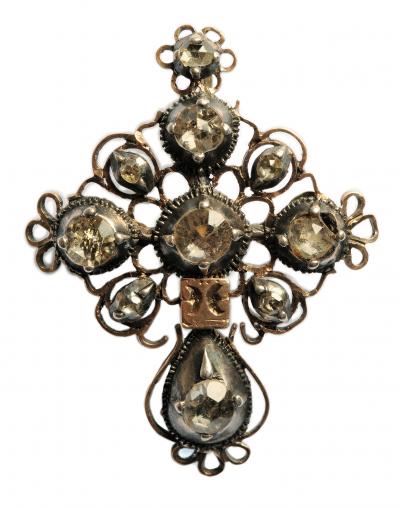
papillon cross in silver and diamonds |
|
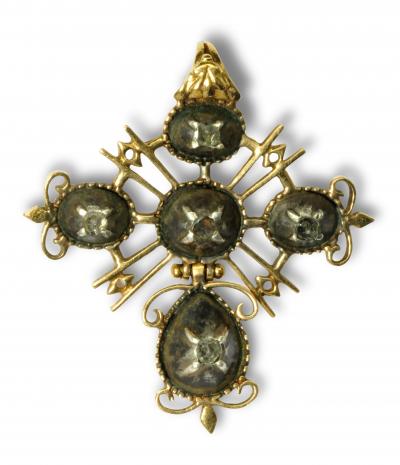
papillon cross in silver and diamonds |
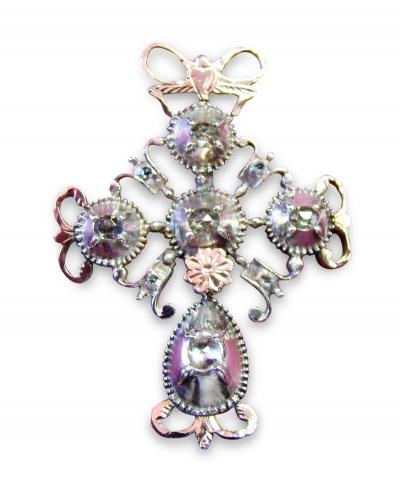
papillon cross in silver and diamonds |
|
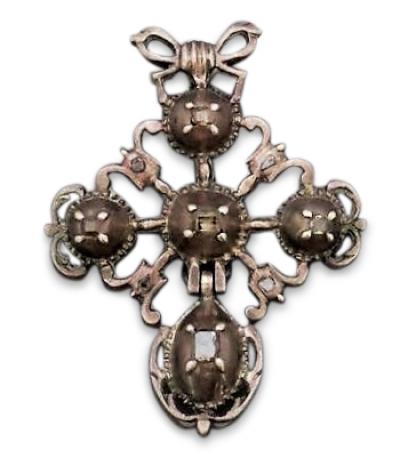
papillon cross in silver and diamonds |
|
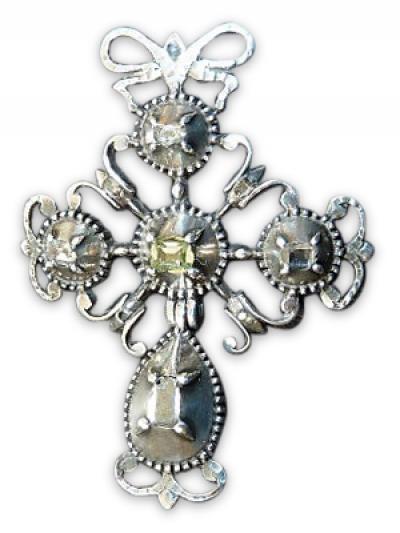
papillon cross in silver and diamonds |
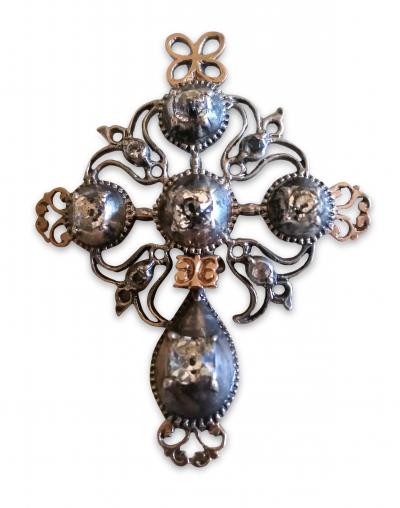
papillon cross in silver and diamonds |
|
|
|
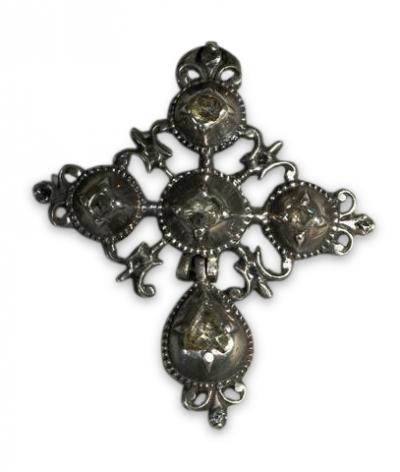
papillon cross in silver and diamonds |
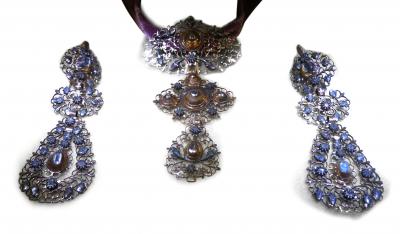
"papillon" '(butterfly) cross and ear pendants in the Musée provençal du costume et du bijou
in Grasse. It is probable that these are in fact Belgian in origin.
Click on the photo to see it in higher resolution
The Badine cross

Provençale badine cross with its slider from the Arles region, in gold, diamonds and enamel
The word badine is an old French word which means "to move gently" and refers to the way the cross is articulated allowing the lower part to move. According to Lionel Bonnemère, it is in fact this cross, and not the one shown above, which was called papillion (butterfly) cross in the 19th century.
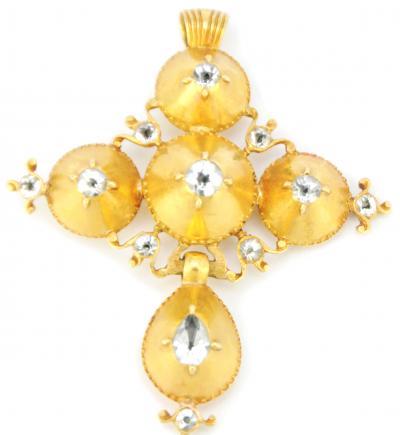
Provençale badine cross from the Arles region, in gold and Rhinestones
18th century
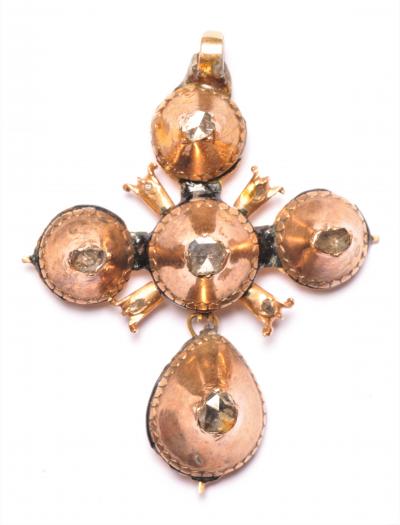
Provençale badine cross from the Arles region, in gold, diamonds and enamel
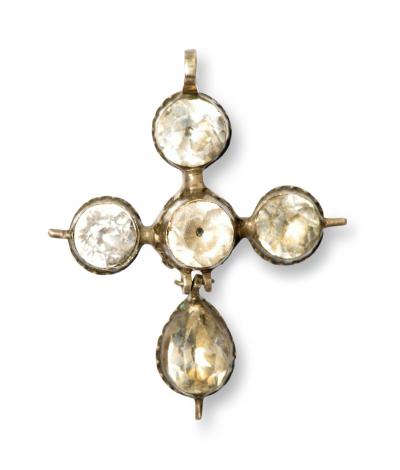
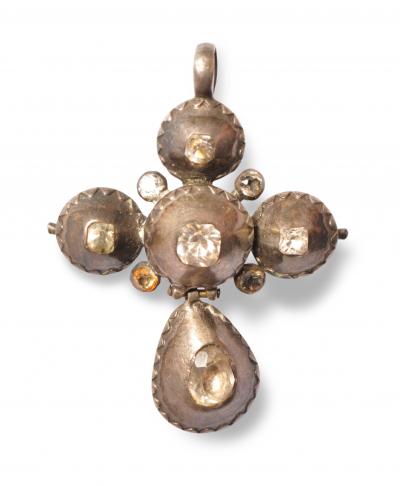
two badine crosses in silver and Rhinestones

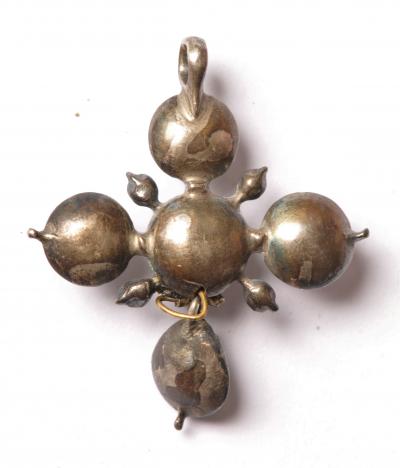
badine cross in silver and Rhinestones, recto - verso
The Marie Antoinette cross

Marie Antoinette cross from Arles region in gold, silver and diamonds, early 19th century |
|
The Marie Antoinette cross, sometimes called the cross of Louis XVI, is made of gold-backed silver and entirely set with table-cut diamonds or brilliant cut Rhinestones. At the centre of the cross, we notice an almost circular pattern, also set with stones. The cross is suspended from a bow-shaped element with three loops set with diamonds or Rhinestones. Diamond-set Marie Antoinette crosses, dating from the end of the 18th century to the beginning of the 19th century, are very rare today.
The Haute Provence cross
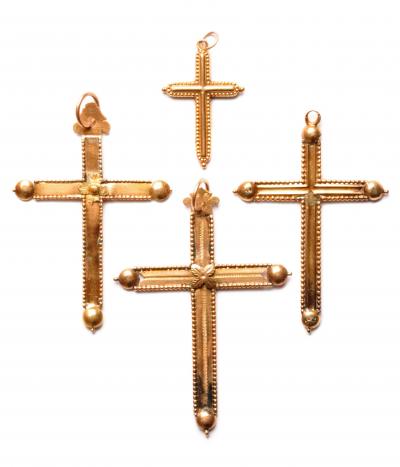
Haute Provence crosses in gold

Haute Provence cross in gold
The Camargue cross

Camargue cross in silver, modern
The Camargue cross was created in 1926 by Hermann Paul and rapidly adopted by the Camarguais as a symbol of their region. It is made of of moitifs representing the three thoelogical virtues of chistianity : faith, with the cross, hope, with the anchor of the fishermen, and charity with the heart. The three ends of the cross have been shaped with the trident to recall the trident of the gardian.

Camargue cross in gold, modern
The Arlesian necklace
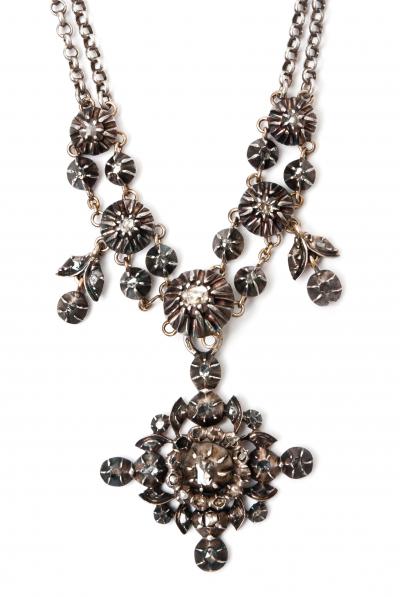
Arles necklace of gold, silver and diamonds
(the bottom part of the (Flemish) cross is missing)
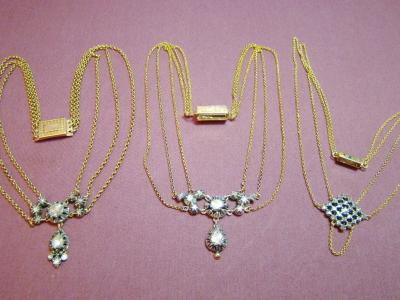
Three Arlesien necklaces called "rivières" in gold, silver and diamonds
|
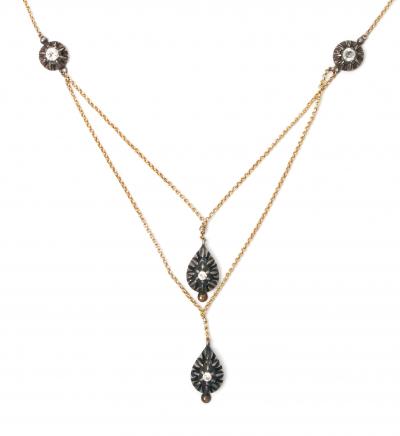
Arles necklace, gold, silver and strass
Click on the photo to see it in higher resolution
|
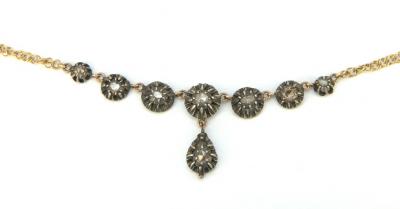
rivière necklace from Arles in gold, silver and diamonds
Click on the photo to see it in higher resolution
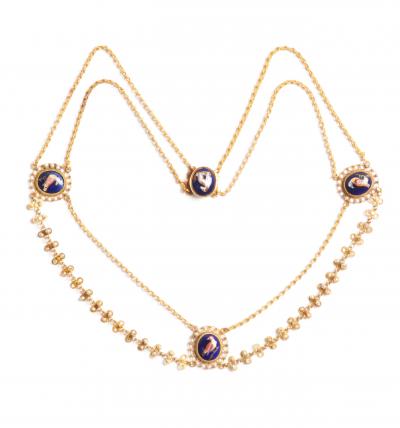
"esclavage" necklace in gold, pearls and enamel
(collected in Arles but not specific to this region)
Click on the photo to see it in higher resolution

détail of enamelled catch on the esclavage necklace shown above
The Marseillais necklace
The Marseillais necklace consists of an assembly of hollow graduated gold beads, strung together with the largest balls towards the center. On the oldest necklaces, the beads were threaded on a linen thread, but the fragility of the latter resulted in it being replaced with a smooth chain of square section. These necklaces were, in the past, a form of savings for women, allowing them to add or resell beads according to the state of their finances.
Families in Marseilles often bought the first beads at the birth of a girl and added one or more beads at each birthday; the complete necklace being offered for the sixteenth birthday or for the first communion. In other parts of France, we see the same tradition but with a necklace of cultured pearls, whose pearls were offered by the godmother or a relative on each birthday.
Today the Marseille necklace is still popular in the south, but the beads are no longer strung on a chain but are now connected by loops of gold. Almost all the old Marseille necklaces I bought had beads which were very worn from rubbing against the chain and I suspect that the use of a chain was abandoned for this reason. That said, I never got around to photographing one of these old necklaces and I hope that a reader will send me a photo.
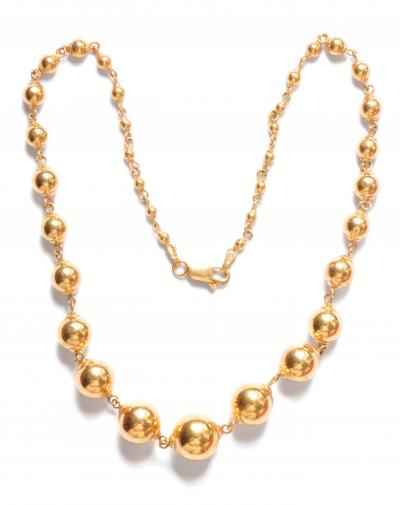
modern Marseillais necklace of gold beads
The provencale fibula
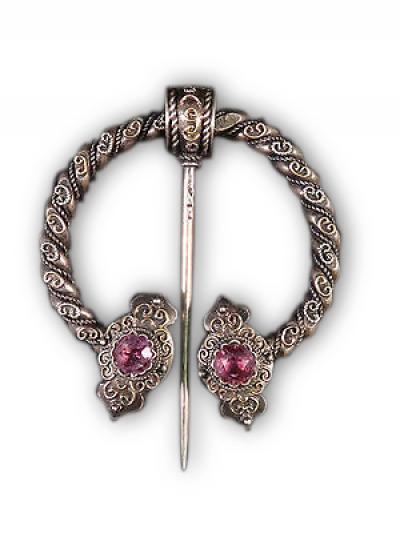
provencal fibula in silver and Rhinestones

provencal fibula in silver and Rhinestones
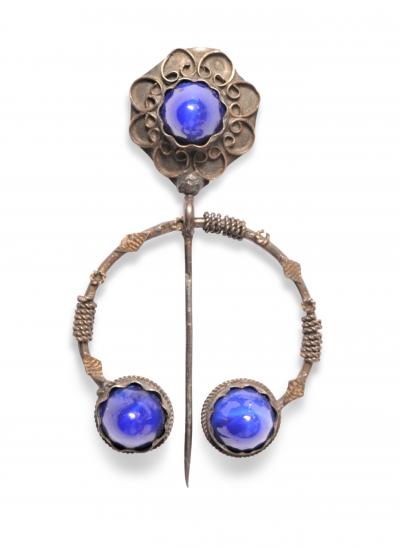
provencal fibula in silver and glass
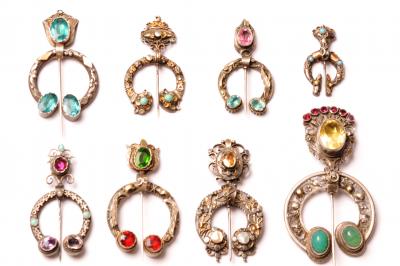
fibulae from Provence in silver and glass
The Provencal belt clip (lou clavié)
Chatelaines are known as claviers (lou clavié) in Provence, chatelaines in Alsace and crochets in Poitou-Charentes and the Pays de la Loire. Chatelaines are formed of a length of metal more or less decorated and often engraved and pierced, then bent back on itself with a spatula-shaped segment to hang on the inside of the skirt. They are generally used to suspend a pair of scissors on two chains, sometimes a key and, according to Lionel Bonnemère, a punch used to kill poultry was suspended in Poitou.
There are differences in the shapes of the chatelaines according to the regions. In the south, there is a special type which has at the top a door-knocker shaped ring which opens with a silver screw. This ring was used to hang keys, leaving the chains free for a pair of scissors. There are also chatelaines in the south where the simple chains are split by a separator with a design matching that of the hook. Niort was an important centre of manufacture of chatelaines in the 19th century and there are chatelaines from Niort to be found throughout the southern half of France, most of which were manufactured between 1815 and 1880.
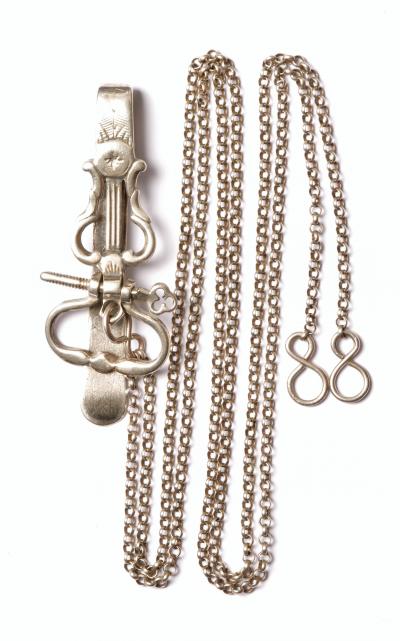

clavier provençal in silver, model with a ring for attaching keys


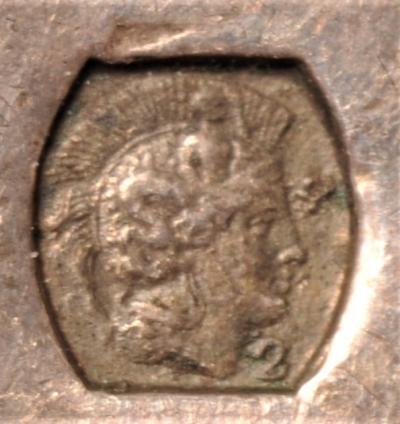
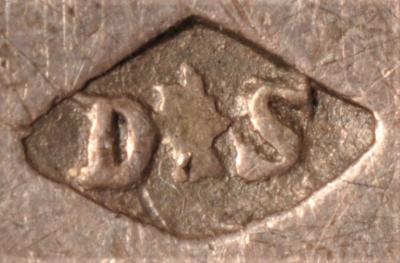
clavier in silver with its chains and separater, hallmarked in Marseille
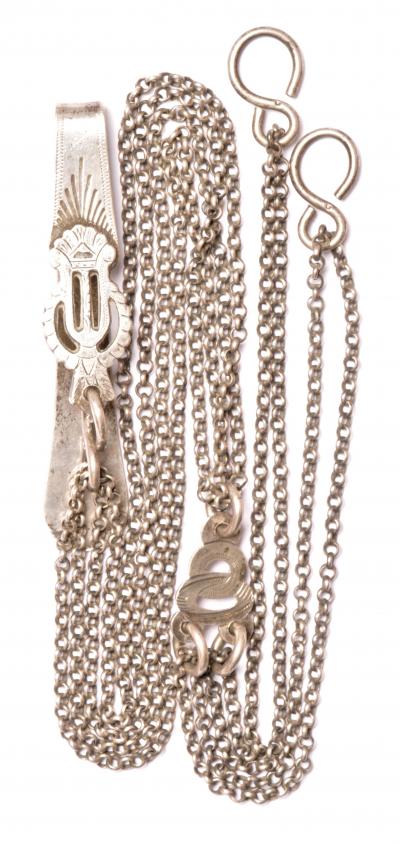

clavier en argent avec ses chaînes et séparateur
It’s important to not underestimate the importance of evolution when looking at antique jewellery. Each jeweller will, under the pression of his clientèle, seek to copy the designs of his competitors if he feels it will help his sales. He may therefore make a small change in the design in order to be able to claim ownership. And gradually the design will evolve, until we see jewels where the overall design makes no sense at all unless we recognise the vestiges of the original design. The lyre design is a case in point. We see it moving further and further from the original lyre until there is no virtually no trace of it left. If you look at the clavier from Lyon below, you can make out the circular elements from an earlier lyre design but nothing else.
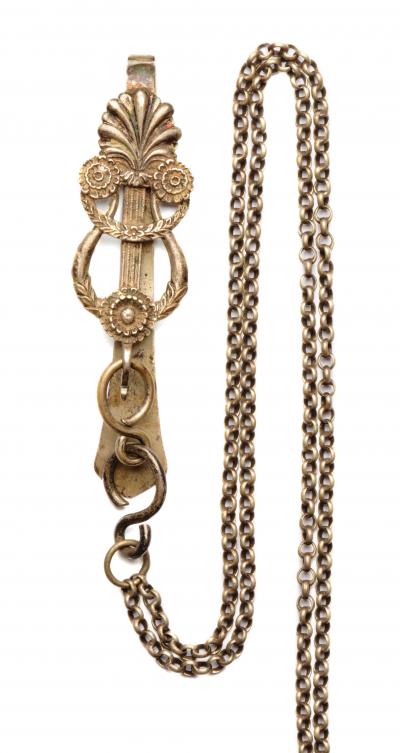
clavier provençal in silver
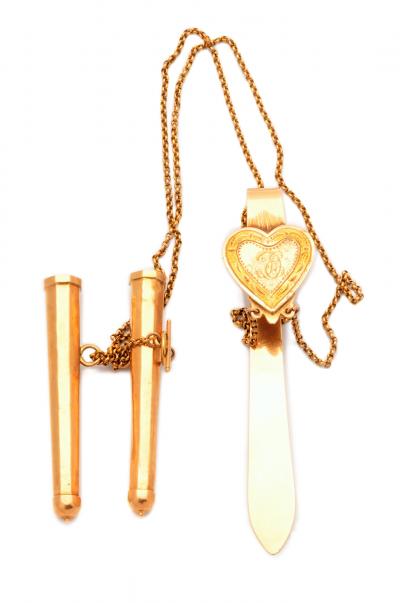
Provencale belt-clip in gold with two knitting needle holders (affiquets) 1809-1819


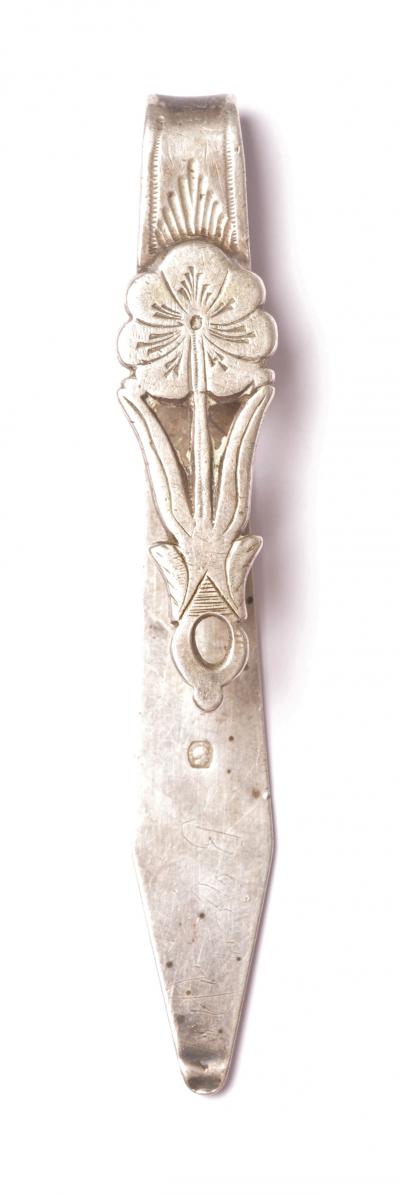
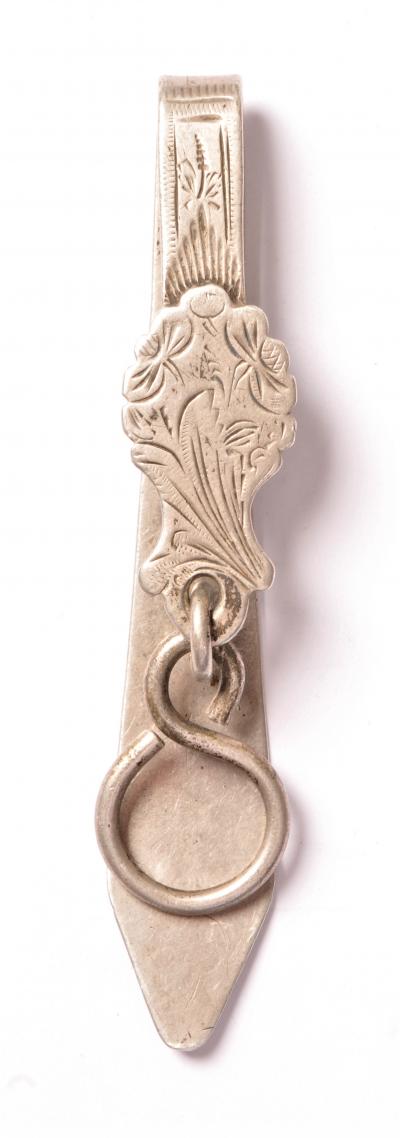

four provencale claviers in silver
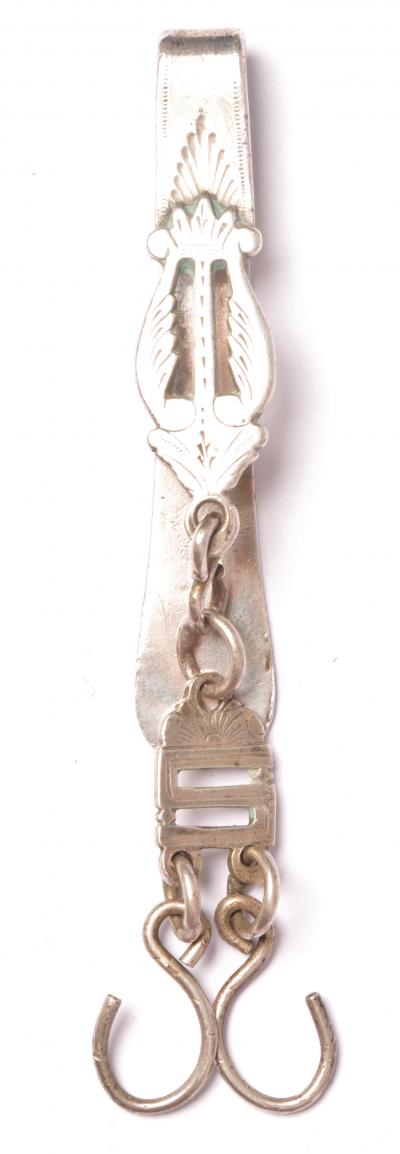
clavier provençal in silver




clavier in silver with its chains and separater, hallmarked in Marseille
Cicada brooches
|
|
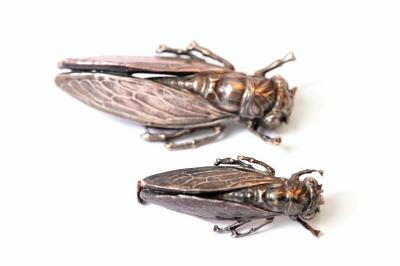
cicada brooches in silver
|
|
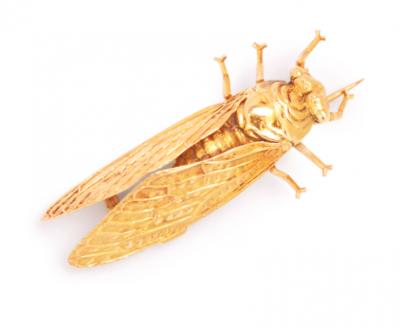
cicada brooch in gold by Giraud
|
|
The plate pattée cross of Nice
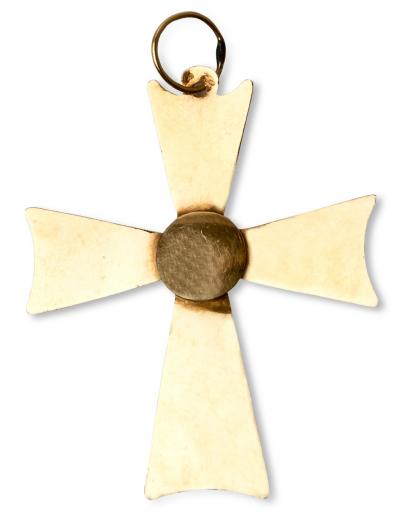
plate pattée cross from Nice, gold
|
|
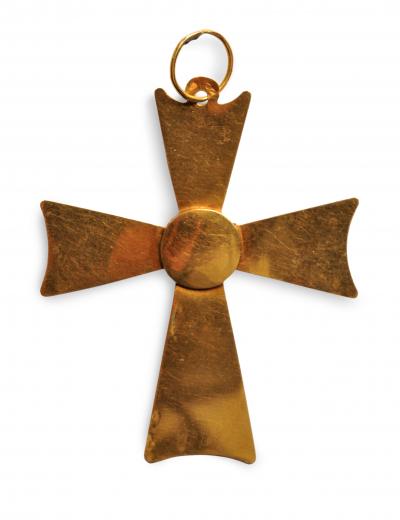
plate pattée cross from Nice, gold
|
Flat Maltese style cross with a central round cabochon. The slide is decorated with a repoussé flower.
The flowered cross from Nice
-
|
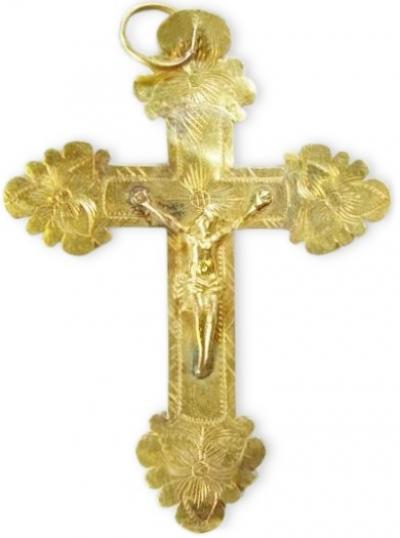
Flowered cross from Nice, gold
|
|
|
|
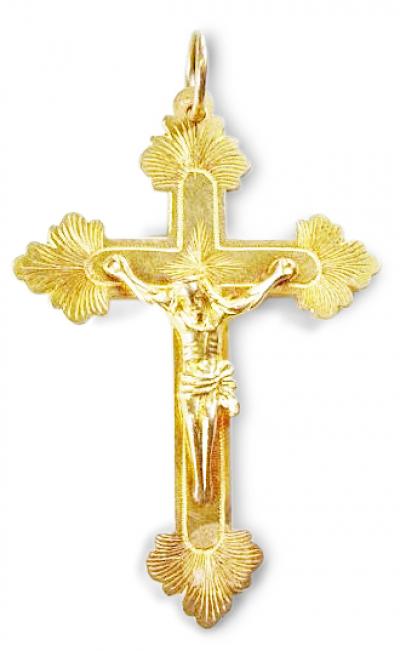
Flowered cross from Nice, gold
|
bijoux de France - French regional jewelry -
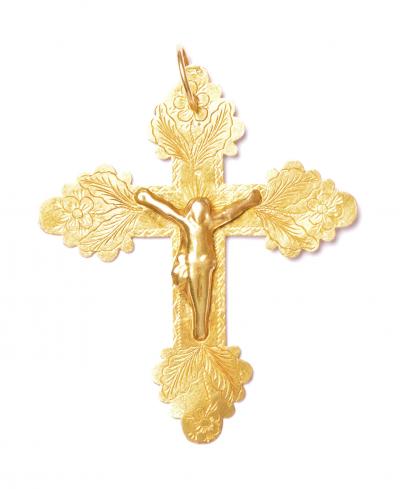
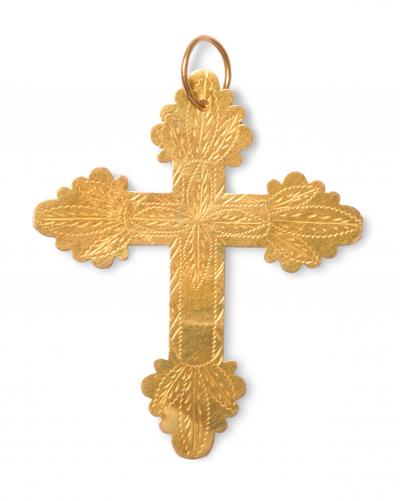
Flowered cross from Nice, gold, recto, verso
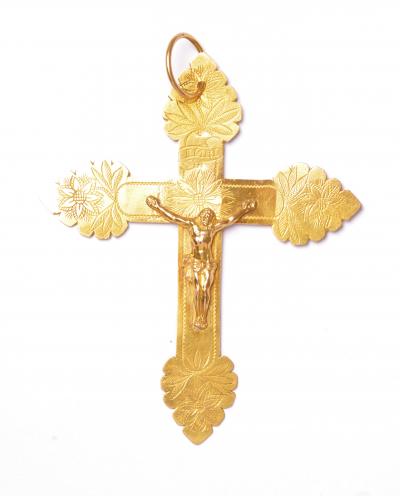

Flowered cross from Nice, gold, recto, verso
The Mistralienne cross
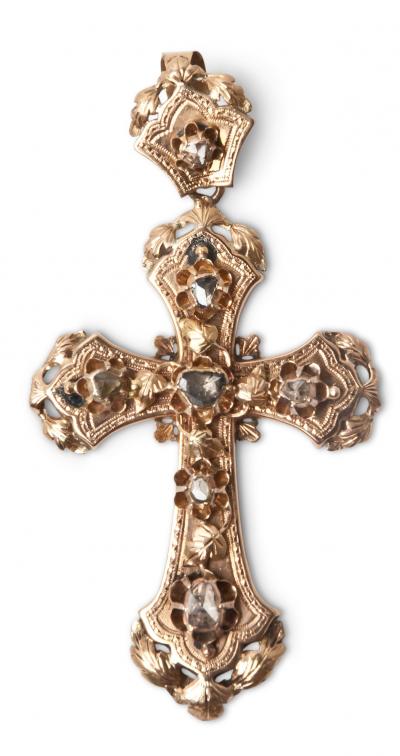
Mistralienne cross in gold and rose-cut diamonds
Jewels in coral
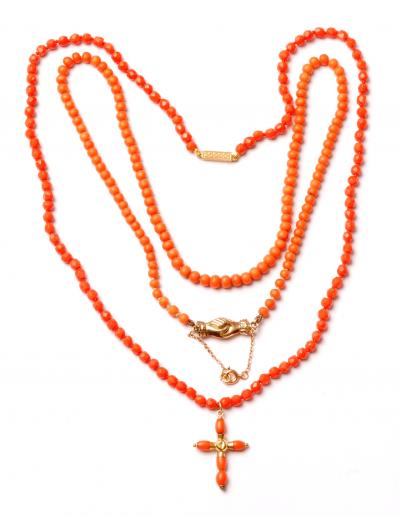
two necklaces in gold and coral
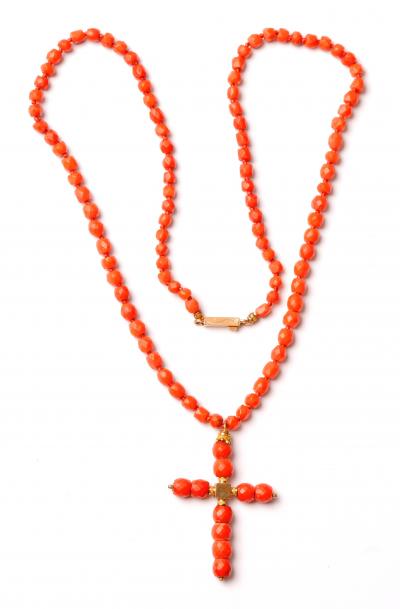
necklace in gold and coral
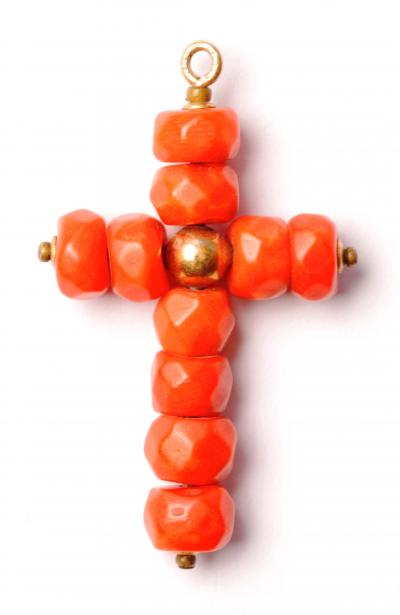
cross in gold and coral |
|
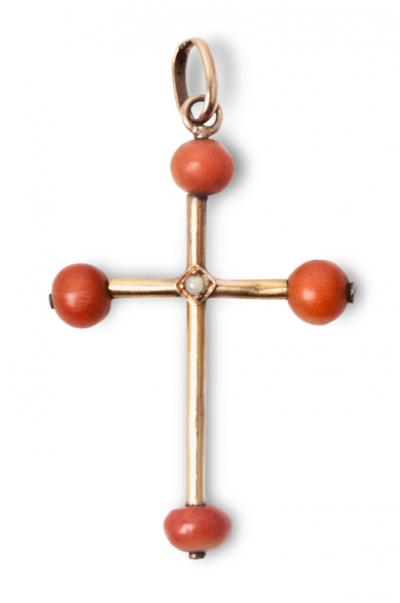
coral and gold cross
|
|
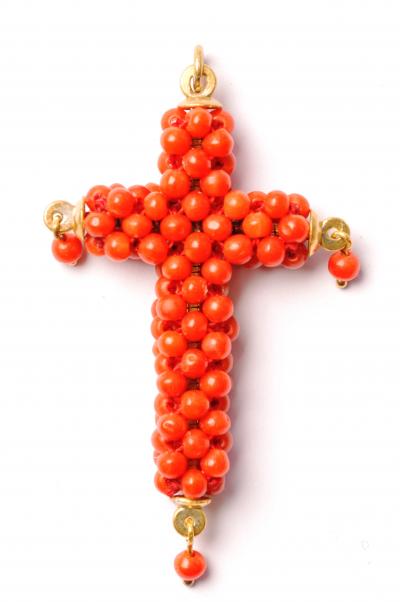
cross in gold and coral |
Earrings

earrings and ear pendants
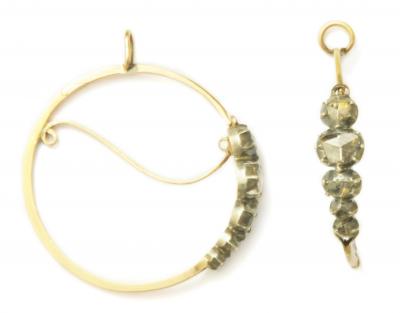
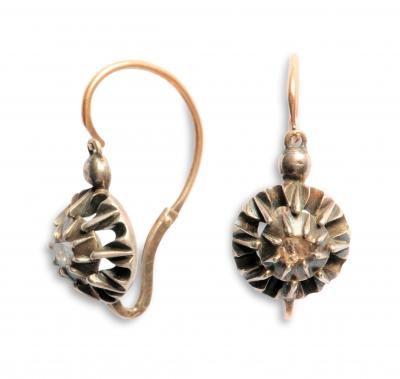
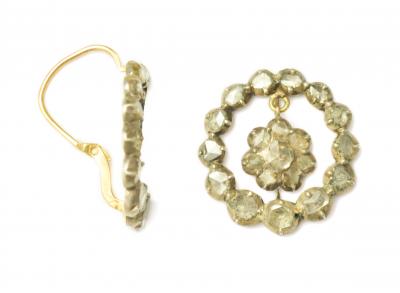
provencal earrings and ear pendants in gold, silver and diamonds
ntique jew
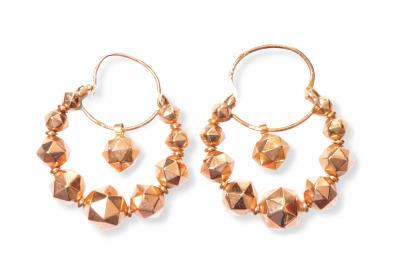
gold créole earrings

gold créole earrings

provençale creole earrings in gold and coral
Shawl pins
